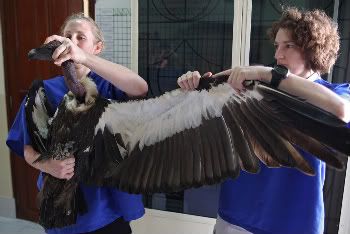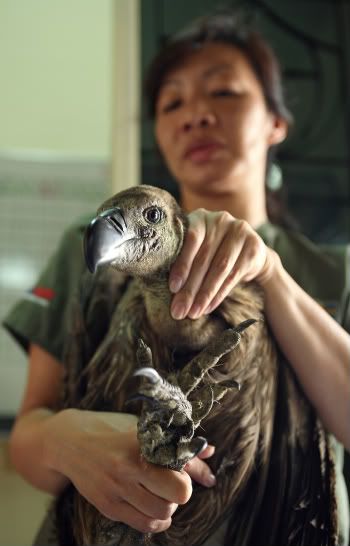mongabay.com
March 19, 2009
|
| |
The adult responded quickly to treatment and after being tagged for later identification was rereleased into the wild. The juvenile vulture is still being treated.
 WCS veterinarian Dr. Priscilla Joyner (right) and bird bander Helen Ward (left) examine one of the white-rumped vultures Photo credit: Allan Michaud.  WCS conservationist Angela Yang holds a rare-white rumped vulture, one of two birds that survived a poisoning incident in Cambodia’s Stung Treng province. Photo credit: Allan Michaud. |
Considered one of the most abundant birds of prey in the world at one time, the white-rumped vulture experienced precipitous declines beginning in the 1990s largely due to the anti-inflammatory cattle drug diclofenac. The drug proved effective in cattle but caused renal failure and mortality in any vulture that fed on the cow corpses which still retained the drug. Populations of white-rumped vultures dropped a staggering 95 percent and have yet to recover.
Cambodia is one of the last strongholds for the species. However, even here the white-rumped vulture is not without threats—for example feeding on a wild buffalo which had been poisoned by hunters. Fortunately the vulture is being monitored closely in Cambodia, which led to the rescue of at least one individual.
WCS is a member of the Cambodia Vulture Conservation Project, which was established the country by the government and several NGOS in 2004 to save the ailing species.

No comments:
Post a Comment